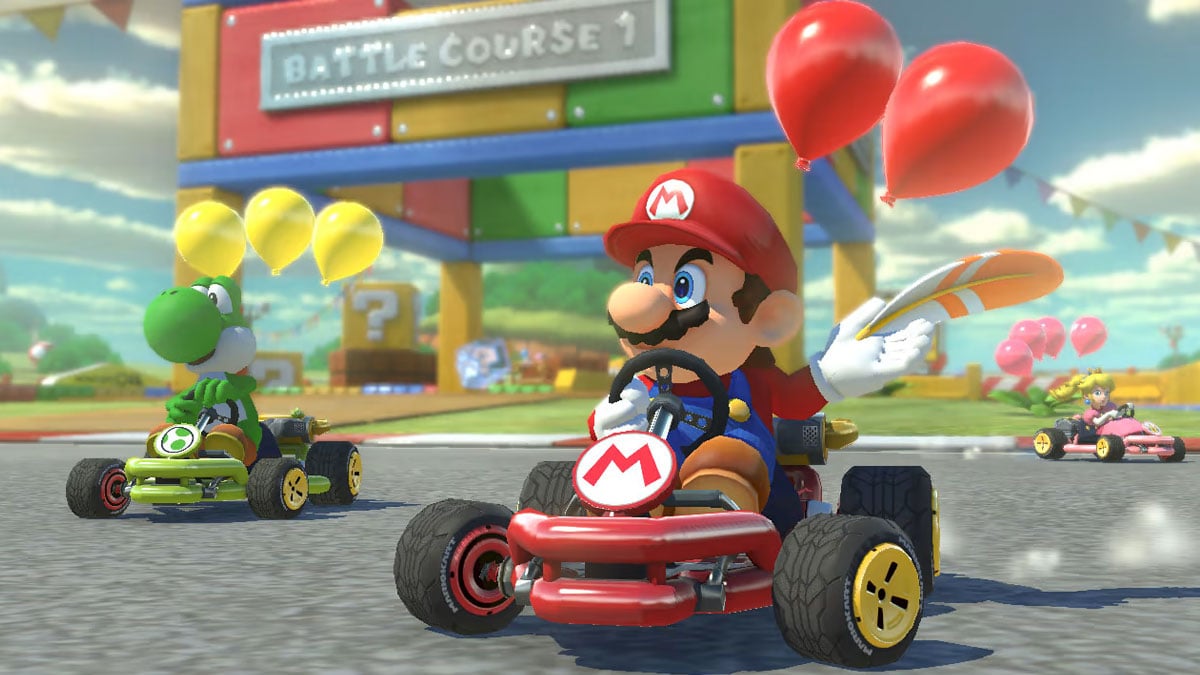Mario Kart 8 has become the most monolithic entry to date. It has endured two console generations, likely due to its staggering sales figures. With that said, the recently announced Mario Kart 8 Deluxe DLC only serves to highlight unfavorable comparisons to the series’ gold standard, Mario Kart DS.
Mario Kart got its start as a party game. Most casual Mario Kart conversations are bound to circle back to gloating about who is better, followed by some sort of conflict such as a shouting match or trash talk. This is because the series largely relied on RNG to even the playing field between casual and skilled players. It was the equalizer among a group of varied participants.
While there is validity to this approach to game design, it also makes the conversation about how good one is at Mario Kart meaningless. The leading player rarely gets anything worth noting, whereas those near the bottom of the pack are consistently rewarded with mushrooms or homing items like the red and blue shells. In these cases, there is nothing a skilled player can do to circumvent such obstacles outside of getting lucky and hoping that they aren’t hit at the most inopportune time, such as just before the finish line.
This is the conundrum Mario Kart DS answered with its introduction of the snaking mechanic. Snaking refers to the act of wiggling the directional pad as quickly as possible during a drift until the kart’s sparks change color. When this occurs, letting go of the drift results in a notable speed boost.
The basic idea is simple, but the execution barrier relegates it to players that have practiced the mechanic and memorized track layouts. Optimal snaking isn’t just about boosting. It’s about approaching a corner at the right angle, making sure you boost at the perfect moment so as to not drift off course or lose momentum. Even within snaking, there are various skill levels that can differentiate racers. Some might only be comfortable snaking specific corners that offer enough space. Others are capable of snaking through an entire course without skipping a beat.
There’s an elegance to witnessing a high level player perfectly maneuver through tight corners and straight narrow paths, maintaining boost throughout all three laps. Mario Kart DS incentivized skilled gameplay in a way that hasn’t been seen since. Items remained a core element to the experience, but never at the expense of those that were dedicated to mastering its systems.
At the end of the day, it was still Mario Kart. There were still hectic, nail-biting moments, but they remained within their skill tiers. If a race contained one snaking master, casual players could still have plenty of fun duking it out among themselves for second and third place.
Snaking continued into Mario Kart 7 before being dropped in Mario Kart 8. The boost players receive from drifting is now decided by the game based on the length of the drift. No player input can alter the game’s decision making process. This effectively makes it impossible to boost through straight paths and whole courses.
Mario Kart 8 is far from a bad game. It’s serviceable, but without a high level technique, it loses its luster for those that yearn for more. Conversations about who is better are irrelevant when Mario Kart 8 removed the skill gap. It’s also difficult to be excited about more Mario Kart DS tracks without the snaking mechanic that made them so engaging to master in the first place.







Published: Feb 17, 2022 09:00 am